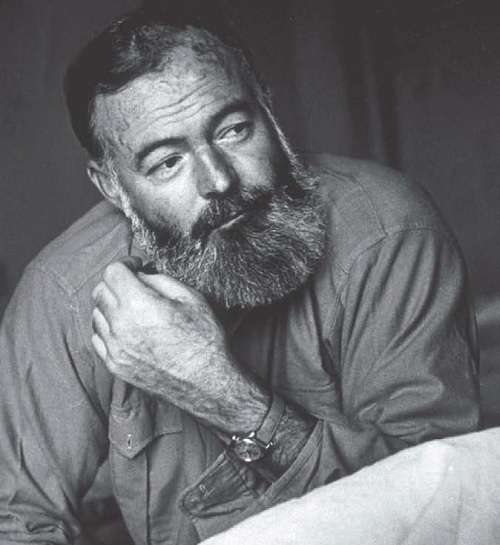(b. July 21, 1899, Cicero [now in Oak Park], Ill., U.S.-d. July 2, 1961, Ketchum, Idaho)
Ernest Hemingway, an American novelist and shortstory writer, was awarded the Nobel Prize for Literature in 1954. He was noted both for the intense masculinity of his writing and for his adventurous and widely publicized life. His succinct and lucid prose style exerted a powerful influence on American and British fiction in the 20th century.
Hemingway entered World War I as an ambulance driver for the American Red Cross. On July 8, 1918, not yet 19 years old, he was injured on the Austro-Italian front at Fossalta di Piave. He was decorated for heroism.
After recuperating at home, Hemingway sailed for France as a foreign correspondent for the Toronto Star. Advised and encouraged by other American writers in Paris-F. Scott Fitzgerald, Gertrude Stein, Ezra Pound-he began to see his nonjournalistic work appear in print there, and in 1925 his first important book, a collection of stories called In Our Time, was published in New York City; it was originally released in Paris in 1924. In 1926 he published The Sun Also Rises, a novel with which he scored his first solid success.

The writing of books occupied Hemingway for most of the postwar years. He remained based in Paris, but he traveled widely for the skiing, bullfighting, fishing, and hunting that by then had become part of his life and formed the background for much of his writing. His position as a master of short fiction had been advanced by Men Without Women in 1927 and thoroughly established with the stories in Winner Take Nothing in 1933.
At least in the public view, however, the novel A Farewell to Arms (1929) overshadowed such works. Reaching back to his experience as a young soldier in Italy, Hemingway developed a grim but lyrical novel of great power, fusing love story with war story.
Hemingway’s love of Spain and his passion for bullfighting resulted in Death in the Afternoon (1932), a learned study of a spectacle he saw more as tragic ceremony than as sport. A minor novel of 1937 called To Have and Have Not is about a Caribbean desperado and is set against a background of lower-class violence and upper-class decadence in Key West during the Great Depression.
By now Spain was in the midst of civil war. Still deeply attached to that country, Hemingway made four trips there, once more a correspondent. He also raised money for the Republicans in their struggle against the Nationalists under General Francisco Franco. The harvest of Hemingway’s considerable experience of Spain in war and peace was the novel For Whom the Bell Tolls (1940), a substantial and impressive work that some critics consider his finest novel.
It was also the most successful of all his books as measured in sales. Set during the Spanish Civil War, it tells of Robert Jordan, an American volunteer who is sent to join a guerrilla band behind the Nationalist lines in the Guadarrama Mountains. Through dialogue, flashbacks, and stories, Hemingway offers telling and vivid profiles of the Spanish character and unsparingly depicts the cruelty and inhumanity stirred up by the civil war.
Following World War II in Europe, which he experienced firsthand as a journalist, Hemingway returned to his home in Cuba and began to work seriously again. He also traveled widely, and, on a trip to Africa, he was injured in a plane crash. Soon after (in 1953), he received the Pulitzer Prize in fiction for The Old Man and the Sea (1952), a short heroic novel about an old Cuban fisherman who, after an extended struggle, hooks and boats a giant marlin only to have it eaten by voracious sharks during the long voyage home. This book, which played a role in gaining for Hemingway the Nobel Prize for Literature in 1954, was enthusiastically praised.
By 1960 Fidel Castro’s revolution had driven Hemingway from Cuba. He settled in Ketchum, Idaho, and tried to lead his life and do his work as before. For a while he succeeded, but, anxiety-ridden and depressed, he was twice hospitalized at the Mayo Clinic in Rochester, Minnesota, where he received electroshock treatments. Two days after his return to the house in Ketchum, he took his life with a shotgun.
Hemingway’s prose style was probably the most widely imitated of any in the 20th century. In striving to be as objective and honest as possible, Hemingway hit upon the device of describing a series of actions by using short, simple sentences from which all comment or emotional rhetoric has been eliminated. The resulting terse, concentrated prose is concrete and unemotional yet is often resonant and capable of conveying great irony through understatement.